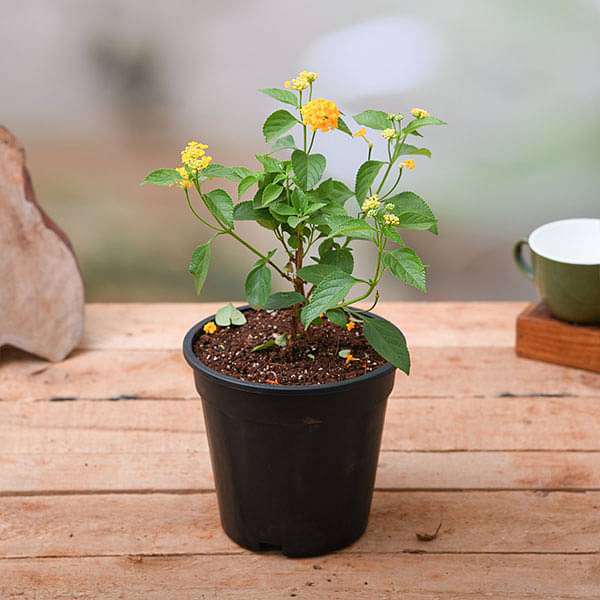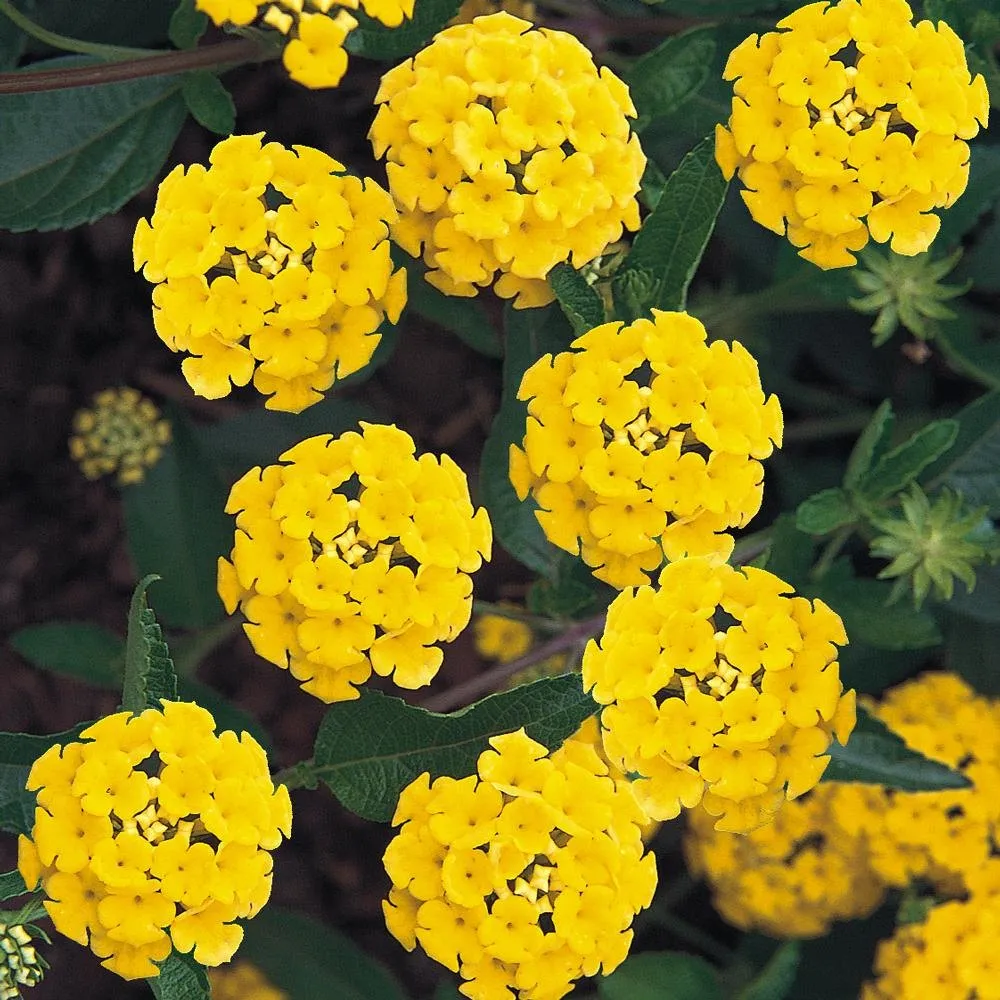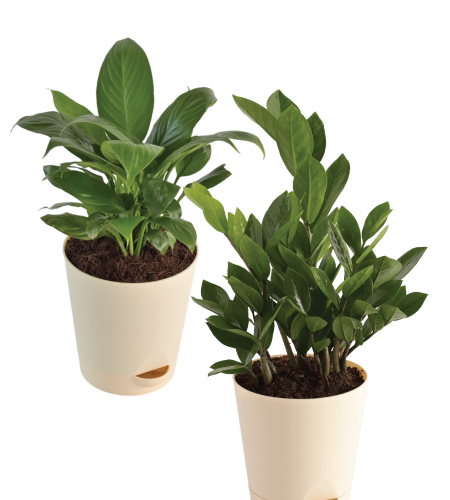Lantana
The growing and care of lantanas (Lantana camara) is easy. These verbena-like flowers have long since been admired for their extended bloom time.
There are several varieties available that offer a multitude of colors. Depending on the region and type grown, lantana plants can be treated as annuals or perennials. Grow lantana flowers in the garden or in containers. Trailing varieties can even be grown in hanging baskets. Lantanas also make a great choice for those wishing to attract butterflies and hummingbirds to the garden.
How to Grow Lantana Flowers
Growing lantana in the garden is a great way to add color and interest. Simply choose a sunny location and plant them in well-draining soil. Although these plants are tolerant of many soil conditions, lantana flowers prefer slightly acidic soil. Mulching with pine needles is an easy way to raise pH levels in areas with low acid.
Lantanas are planted in spring once the threat of cold weather and frost have ceased. Keep in mind, however, that they prefer warm temperatures so new growth may be slow to appear. Once the temperatures warm up though, they will grow abundantly.
Caring for Lantana Plants
While newly planted lantanas require frequent watering, once established, these plants require little maintenance and are even tolerant of somewhat dry conditions. In fact, a good soaking about once a week should keep them relatively happy.
Although it isn’t required, lantana plants can be given a light dose of fertilizer each spring, but too much may inhibit their overall flowering.
To encourage reblooming, cut the tips (deadhead) periodically. Overgrown plants can be given new life by cutting back a third of their growth. They will bounce back quickly. Regular pruning of the plant usually takes place in spring.
Lantana are only second to Porterweed in our garden for their ability to attract butterflies! Lantana are loaded with flower power and normally flower continuously from late spring to frost. This durable and reliable zone 8-9 perennial is moderately drought tolerant, deer and rabbit resistant, salt tolerant, and is generally pest free. For the best results provide your Lantana with an average to well draining soil with average moisture in an area that gets 6 hours or more of sun per day. They can be cut back to near ground level in winter. Provide a protective mulch in winter where hardiness is questionable.
If flowering slows down in summer a shearing to remove as much as 2/3 of the plant including any seeds should help to reinvigorate your Lantana for the remainder of the growing season. If you see white or light green speckling of the foliar be sure to properly destroy any material that you remove. Lantanas are known for their colorful clusters of flowers, but few have found the same success as the Lucky Series of Lantana camara (lahn-TAHN-ah kah-MAR-ah).
In this series are three particular cultivars bred specifically for their yellow blooms that outshine all other yellow varieties and Lantana cultivars.
Be warned that these perennial cultivars come from a parent plant once native to Central and South America and currently considered an invasive species in more than 50 countries. Use care if growing outdoors.
That said, these members of the Verbenaceae family are easy to grow both indoors and outdoors and will quickly bring pollinators to your garden.
There are also many other popular yellow cultivars are out there with nearly identical care instructions (outside of resistances) those in the Lucky Series, including
‘Chapel Hill Yellow’
‘Landmark Yellow’
‘Lemon Swirl’ (AKA ‘Samantha’)
‘New Gold’
‘New Yellow’
As a result, while we shall focus on three Lucky Series cultivars, you may use this guide as a baseline for what you might expect with other yellow lantana cultivars.
Size & Growth
‘Lucky Pot of Gold’ and ‘Lucky Yellow’ follow the general trend of the Lucky Series of being slightly smaller than regular lantanas.
They will generally reach 12″ to 16” inches tall and 12″ to 14” inches wide in a mounded form.
‘Little Lucky Pot of Gold’ is a dwarf cultivar and reaches a much smaller 10″ to 12” inches around.
The ovate leaves of these plants are dark green, toothed, and textured.
When bruised, they will produce a slightly pungent odor.
In warm climates yellow Lantana is grown as a perennial. In colder climates, it is grown as an annual.
Flowering And Fragrance
One of the biggest draws of the Lucky Series is the fact that it blooms in spring, up to three weeks earlier than other lantanas.
The flowers of all yellow lantanas form flower cluster bouquets that attract butterflies and hummingbirds.
Pot of Gold and other members of the Lucky Series produce fewer berries, instead putting their energy into more blooms, which can last until the first frost.
Light & Temperature
These cultivars love sun and warmth, so be sure to place them in a spot with full sun to light shade or dappled sunlight.
Partial shade conditions may result in fungal infections.
Likewise, these plants can handle almost any level of humidity, but high humidity may result in fungal infections.
Pot of Gold and other members of the Lucky Series do best in USDA hardiness zones 10 to 12 but may be grown down to zone 8 if the roots are properly sheltered from cold temperatures.
The roots may die if the temperature reaches 32° degrees Fahrenheit, and the plant itself will suffer damage in chilly weather, causing it to die back.
Indoors, room temperature or hotter is perfect for the Lucky Series.
Watering And Feeding
One mature, the Lucky Series is highly drought tolerant and doesn’t like to be too wet.
Using the soak and dry method, give this plant a drink when the soil is dry about halfway down (or around 2″ to 4” inches in the garden), but try not to let the soil dry out completely for better results.
Pot of Gold and her sister plants can be heavy feeders and will need a dose of balanced liquid houseplant fertilizer weekly during the growing season.
Dwarf cultivars, such as ‘Little Lucky Pot of Gold’ will need feeding every two weeks.
Be sure to feed according to the instructions on the fertilizer’s label.
Soil & Transplanting
The Lucky series will tolerate almost any soil type, as long as it’s well-drained.
It’s also capable of tolerating a soil pH from slightly acidic to alkaline, but will need slightly acidic conditions when the soil quality is poor.
When potted, it will need repotting only every 2 to 3 years to replace the soil and provide a larger container as needed.
Grooming And Maintenance
Yellow lantanas are low-maintenance plants, and the Lucky Series requires even less.
The latter needs less pinching due to a naturally compact and branching habit, and doesn’t require deadheading to continue blooming.
Prune away damaged or diseased foliage as needed and check occasionally for signs of infestation or infection.
Sale!
Yellow Lantana
Original price was: ₹350.00.₹299.00Current price is: ₹299.00.
Type: Ornamental plant
Organic: Yes
Quantity: 1
Bloom time: Spring bloom, Summer bloom
Difficulty: easy
Sunlight: Full sun, Partial sun
Temperature: 30 to 40 degrees C
Soil: Sandy soil
Only logged in customers who have purchased this product may leave a review.












Reviews
There are no reviews yet.